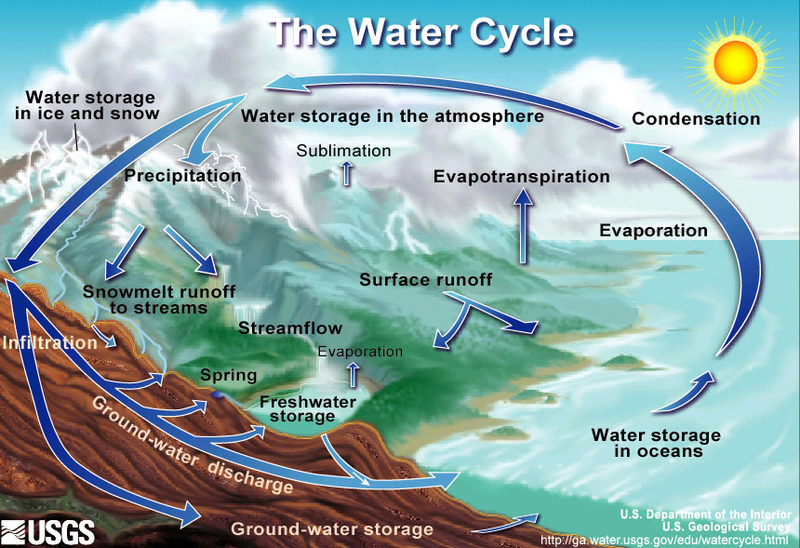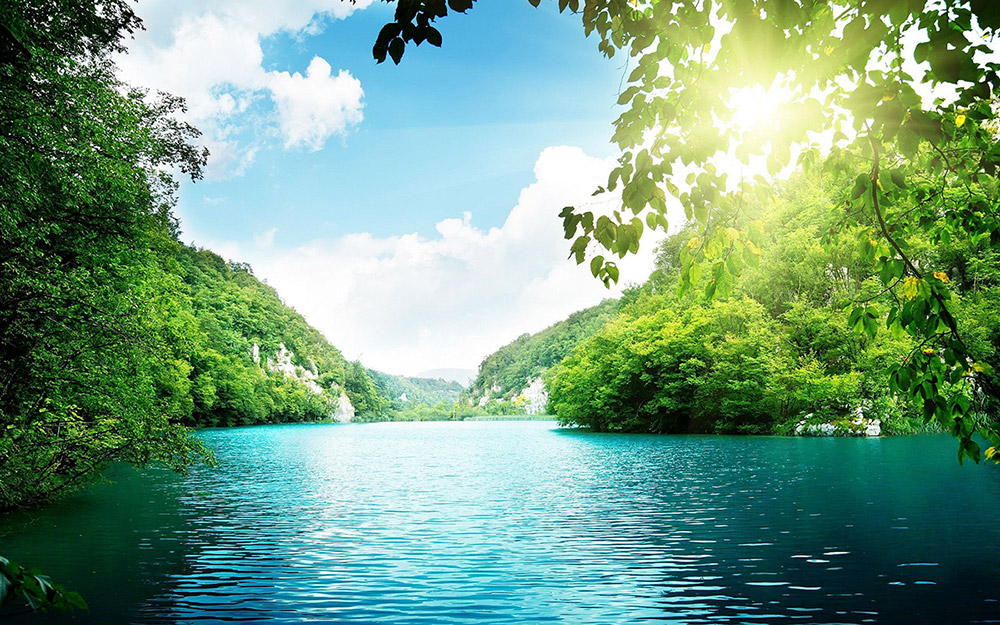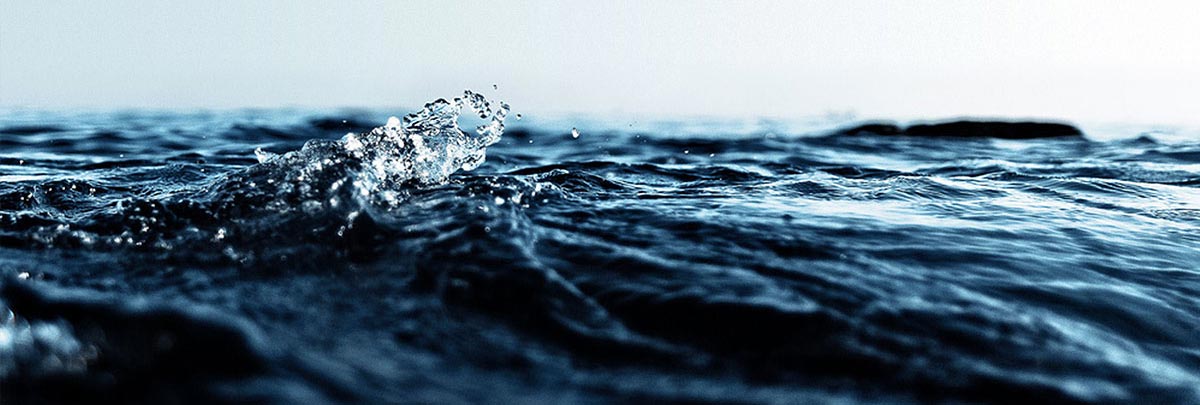
Water Cycle
The water cycle is the key to the cycle of life on earth. Without water, we could not survive. It is amazing that of all the water on earth (about 332.5 million cubic miles of water), over 96 percent is saline and not use-able for either drinking or irrigation. The remaining 4% is freshwater, but 68 percent is located in ice and glaciers. Thirty percent of freshwater is groundwater, and surface-water sources, like rivers and lakes, make up the remaining 2% of the world’s water. Because of the ease of access, rivers and lakes are the most used water resources, and the most easily polluted.

Balance Of Water
The balance of water on the Earth remains fairly stable. Water moves through the hydrologic cycle — rain and snow become groundwater, surface water and saltwater, which then evaporates, transpires, or sublimates into water vapor, beginning the process anew. In other words, all water on Earth is essentially recycled water. It is a (mostly) closed system, which makes wise management of this essential resource especially important. Current water policy, including increasingly strict regulations, stems from the need to control pollution and misuse of our water resources. Water management and water utilities are an important part maintaining high quality water resources by reducing localized pollution and returning clean water to the surrounding waterways or groundwater stores.

Water Care
At Aquality, we believe that we should treat our water resources with care. California has particularly complicated water resource issues. The naturally arid landscape has been reshaped, diverting waterways for agriculture and for use by highly populated cities. The demand for water is damaging lakes, streams, and rivers, and waterways along the coast are seeing an increase in salinity as more water is removed than will be replaced. This makes water conservation an especially important issue for California. Aquality encourages innovative solutions to water conservation, including the use of recycled water for irrigation, and advanced treatment technologies to reduce pollution of fragile systems.

